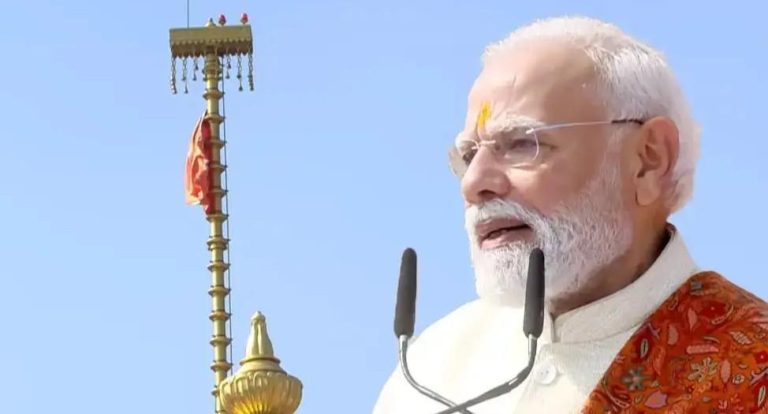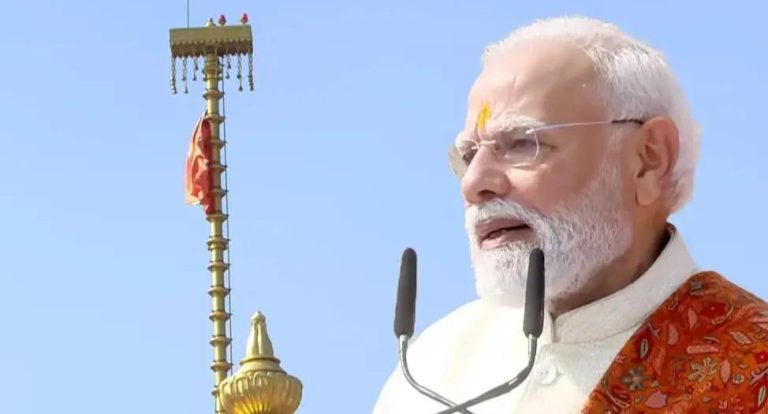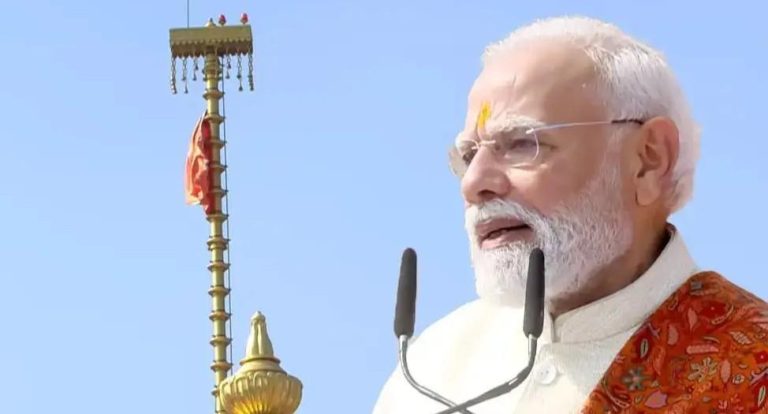
Our Ram Unites Through Emotion, Not Division: PM at Ram Temple
In a speech that emphasized the importance of unity and inclusivity, Prime Minister Narendra Modi addressed a gathering at the Ram Temple in Ayodhya, where he was attending a flag-hoisting ceremony. The Prime Minister’s words were a powerful reminder of the values that India’s ancient traditions embody, and the role that they can play in shaping the country’s future. “Our Ram unites through emotion, not division,” he said, emphasizing the idea that the figure of Ram is a unifying force that transcends the divisions of caste, class, and creed.
The Prime Minister’s speech was significant not just for its words, but also for its context. The Ram Temple in Ayodhya is a site of great cultural and historical significance, and its reconstruction has been a long-standing demand of many Hindus. However, the Prime Minister’s speech made it clear that the temple is not just a symbol of Hindu identity, but also a reminder of the values of compassion, justice, and equality that are at the heart of Indian culture. “With this thought, we have kept women, farmers, Dalits, backward classes, and tribals at the centre of development,” he said, emphasizing the importance of inclusivity and social justice in India’s development.
The Prime Minister’s words were also a call to action, as he emphasized the need for India to become a developed country by the year 2047. This is a ambitious goal, but one that is achievable if India can harness its vast human and natural resources, and channel them into a programme of sustainable development. “If India is to become developed by the year 2047, we must walk the path shown by Ram,” he said, emphasizing the importance of following the principles of righteousness, justice, and compassion that are embodied in the figure of Ram.
The idea of Ram as a unifying figure is not new, but it is one that has taken on a new significance in modern India. At a time when the country is facing many challenges, from poverty and inequality to climate change and social unrest, the figure of Ram offers a powerful reminder of the values that can bring Indians together. Whether it is the idea of Ram as a just and compassionate ruler, or the image of Ram as a brave and selfless warrior, the figure of Ram has the power to inspire and uplift people from all walks of life.
The Prime Minister’s speech also highlighted the importance of women, farmers, Dalits, backward classes, and tribals in India’s development. These groups have long been marginalized and excluded from the mainstream of Indian society, but they are also the ones who have the most to gain from India’s development. By putting them at the centre of development, the Prime Minister is recognizing the critical role that they can play in shaping India’s future, and the need to address the historical injustices that have been perpetrated against them.
The idea of India as a developed country by 2047 is a ambitious one, but it is also a necessary one. India is a country with vast human and natural resources, but it is also a country that faces many challenges, from poverty and inequality to climate change and social unrest. If India is to become a developed country, it will need to harness its resources, and channel them into a programme of sustainable development. This will require a concerted effort from all sections of society, including government, business, and civil society.
The path shown by Ram is one of righteousness, justice, and compassion. It is a path that emphasizes the importance of living in harmony with nature, and of recognizing the inherent dignity and worth of every human being. It is a path that is rooted in the values of Indian culture, but it is also a path that is relevant to the modern world. As India looks to the future, it is this path that offers the greatest hope for a brighter, more sustainable, and more equitable tomorrow.
In conclusion, the Prime Minister’s speech at the Ram Temple in Ayodhya was a powerful reminder of the values that can bring Indians together. The figure of Ram is a unifying force that transcends the divisions of caste, class, and creed, and offers a powerful reminder of the importance of compassion, justice, and equality. As India looks to the future, it is this path that offers the greatest hope for a brighter, more sustainable, and more equitable tomorrow.




